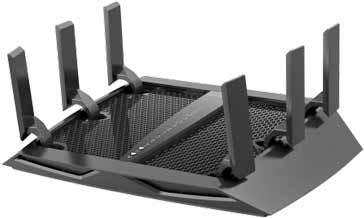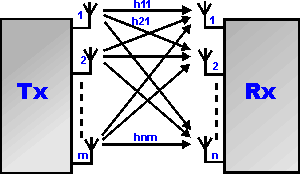What is MIMO Wireless Technology
MIMO: Multiple Input Multiple Output technology uses multiple antennas to make use of reflected signals to provide gains in channel robustness and throughput.
Home » Antennas & Propagation » this page
MIMO Technology Includes:
MIMO basics
MIMO formats: SIMO, SIMO, MISO, MIMO
Spatial multiplexing
Space time & Alamouti codes
MIMO antenna beamforming
Multi-user MIMO
Massive MIMO
Multiple-input multiple-output, or MIMO, is a radio communications technology or RF technology that is being mentioned and used in many new technologies these days.
Wi-Fi, LTE; Long Term Evolution, and many other radio, wireless and RF technologies are using the new MIMO wireless technology to provide increased link capacity and spectral efficiency combined with improved link reliability using what were previously seen as interference paths.
Even now many there are many MIMO wireless routers on the market, and as this RF technology is becoming more widespread, more MIMO routers and other items of wireless MIMO equipment will be seen.

As the technology is complex many engineers are asking what is MIMO and how does it work.
MIMO development and history
MIMO technology has been developed over many years. Not only did the basic MIMO concepts need to be formulated, but in addition to this, new technologies needed to be developed to enable MIMO to be fully implemented. New levels of processing were needed to allow some of the features of spatial multiplexing as well as to utilise some of the gains of spatial diversity.
Up until the 1990s, spatial diversity was often limited to systems that switched between two antennas or combined the signals to provide the best signal. Also various forms of beam switching were implemented, but in view of the levels of processing involved and the degrees of processing available, the systems were generally relatively limited.
However with the additional levels of processing power that started to become available, it was possible to utilise both spatial diversity and full spatial multiplexing.
The initial work on MIMO systems focussed on basic spatial diversity - here the MIMO system was used to limit the degradation caused by multipath propagation. However this was only the first step as system then started to utilise the multipath propagation to advantage, turning the additional signal paths into what might effectively be considered as additional channels to carry additional data.
Two researchers: Arogyaswami Paulraj and Thomas Kailath were first to propose the use of spatial multiplexing using MIMO in 1993 and in the following year their US patent was granted.
However it fell to Bell Labs to be the first to demonstrate a laboratory prototype of spatial multiplexing in 1998.
MIMO -Multiple Input Multiple Output basics
A channel may be affected by fading and this will impact the signal to noise ratio. In turn this will impact the error rate, assuming digital data is being transmitted. The principle of diversity is to provide the receiver with multiple versions of the same signal. If these can be made to be affected in different ways by the signal path, the probability that they will all be affected at the same time is considerably reduced. Accordingly, diversity helps to stabilise a link and improves performance, reducing error rate.
Several different diversity modes are available and provide a number of advantages:
- Time diversity: Using time diversity, a message may be transmitted at different times, e.g. using different timeslots and channel coding.
- Frequency diversity: This form of diversity uses different frequencies. It may be in the form of using different channels, or technologies such as spread spectrum / OFDM.
- Space diversity : Space diversity used in the broadest sense of the definition is used as the basis for MIMO. It uses antennas located in different positions to take advantage of the different radio paths that exist in a typical terrestrial environment.
MIMO is effectively a radio antenna technology as it uses multiple antennas at the transmitter and receiver to enable a variety of signal paths to carry the data, choosing separate paths for each antenna to enable multiple signal paths to be used.

One of the core ideas behind MIMO wireless systems space-time signal processing in which time (the natural dimension of digital communication data) is complemented with the spatial dimension inherent in the use of multiple spatially distributed antennas, i.e. the use of multiple antennas located at different points. Accordingly MIMO wireless systems can be viewed as a logical extension to the smart antennas that have been used for many years to improve wireless.
It is found between a transmitter and a receiver, the signal can take many paths. Additionally by moving the antennas even a small distance the paths used will change. The variety of paths available occurs as a result of the number of objects that appear to the side or even in the direct path between the transmitter and receiver. Previously these multiple paths only served to introduce interference. By using MIMO, these additional paths can be used to advantage. They can be used to provide additional robustness to the radio link by improving the signal to noise ratio, or by increasing the link data capacity.
The two main formats for MIMO are given below:
- Spatial diversity: Spatial diversity used in this narrower sense often refers to transmit and receive diversity. These two methodologies are used to provide improvements in the signal to noise ratio and they are characterised by improving the reliability of the system with respect to the various forms of fading.
- Spatial multiplexing : This form of MIMO is used to provide additional data capacity by utilising the different paths to carry additional traffic, i.e. increasing the data throughput capability.
As a result of the use multiple antennas, MIMO wireless technology is able to considerably increase the capacity of a given channel while still obeying Shannon's law. By increasing the number of receive and transmit antennas it is possible to linearly increase the throughput of the channel with every pair of antennas added to the system. This makes MIMO wireless technology one of the most important wireless techniques to be employed in recent years. As spectral bandwidth is becoming an ever more valuable commodity for radio communications systems, techniques are needed to use the available bandwidth more effectively. MIMO wireless technology is one of these techniques.
 Written by Ian Poole .
Written by Ian Poole .
Experienced electronics engineer and author.
More Antenna & Propagation Topics:
EM waves
Radio propagation
Ionospheric propagation
Ground wave
Meteor scatter
Tropospheric propagation
Antenna basics
Cubical quad
Dipole
Discone
Ferrite rod
Log periodic antenna
Parabolic reflector antenna
Phased array antennas
Vertical antennas
Yagi
Antenna grounding
Installation guidelines
TV antennas
Coax cable
Waveguide
VSWR
Antenna baluns
MIMO
Return to Antennas & Propagation menu . . .




